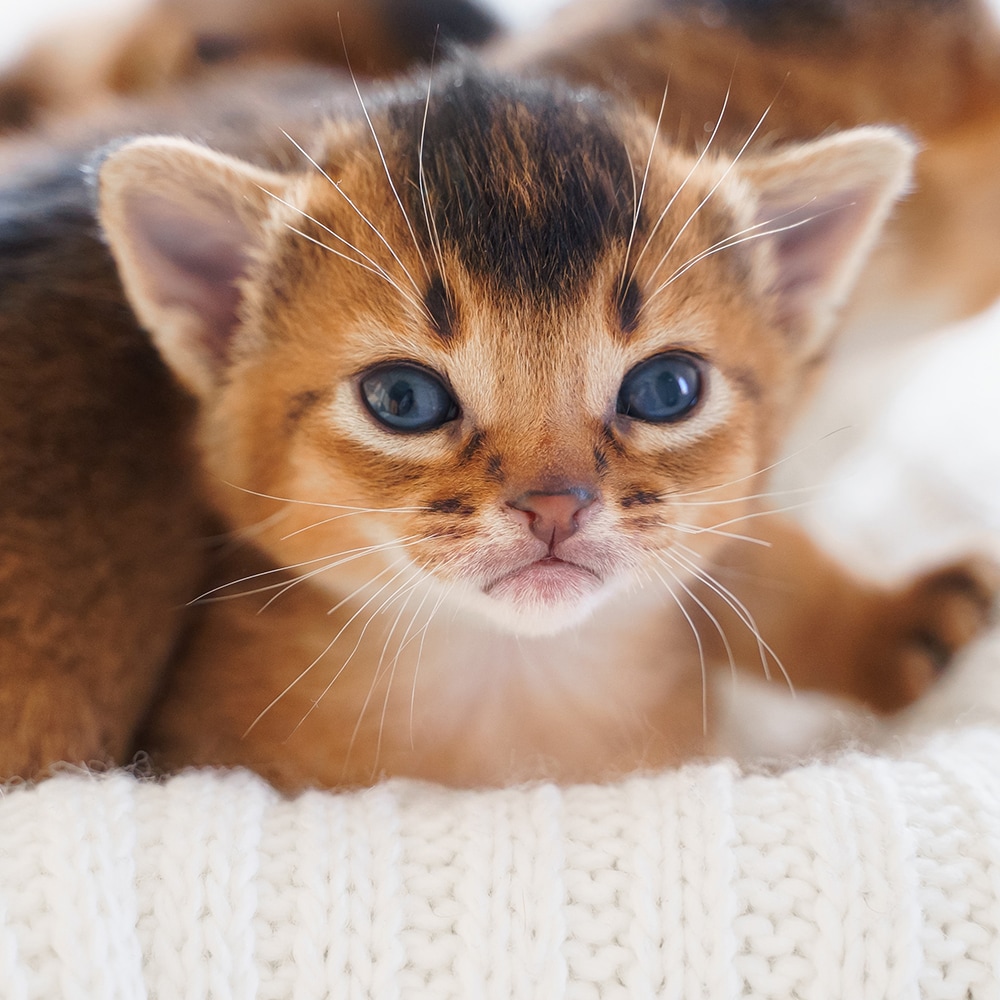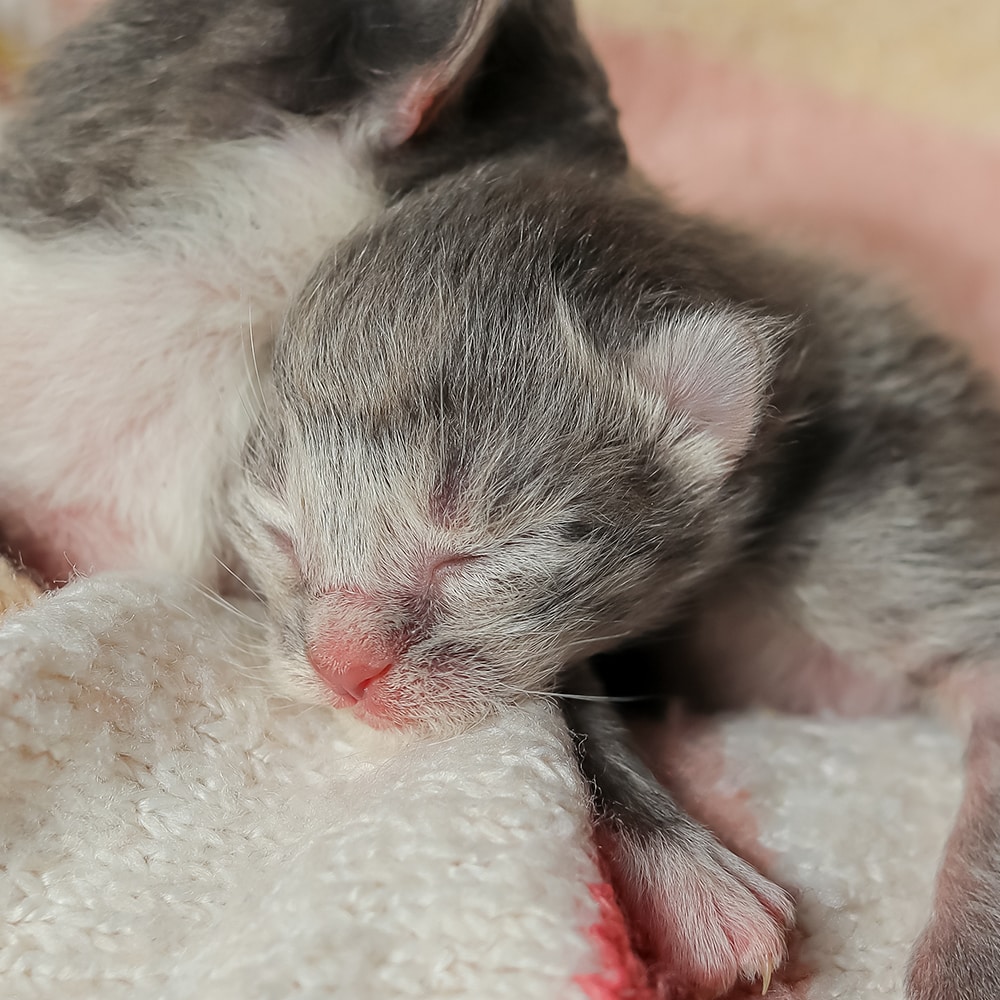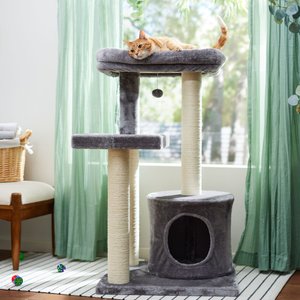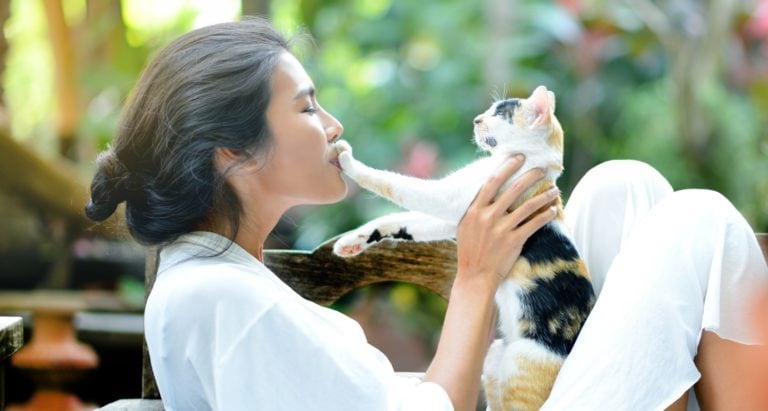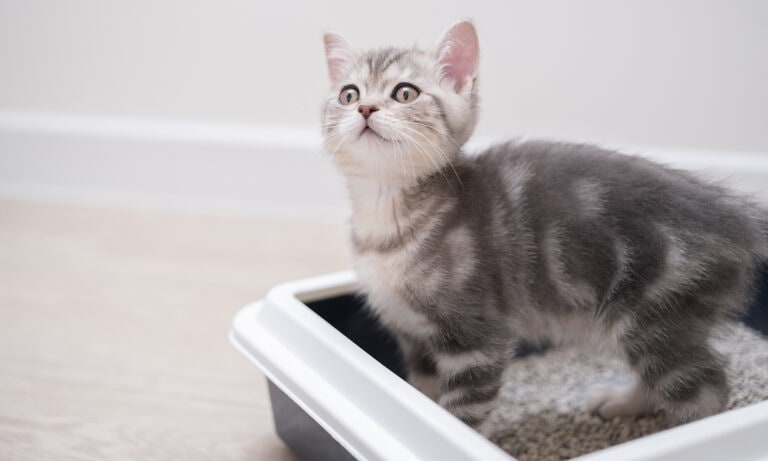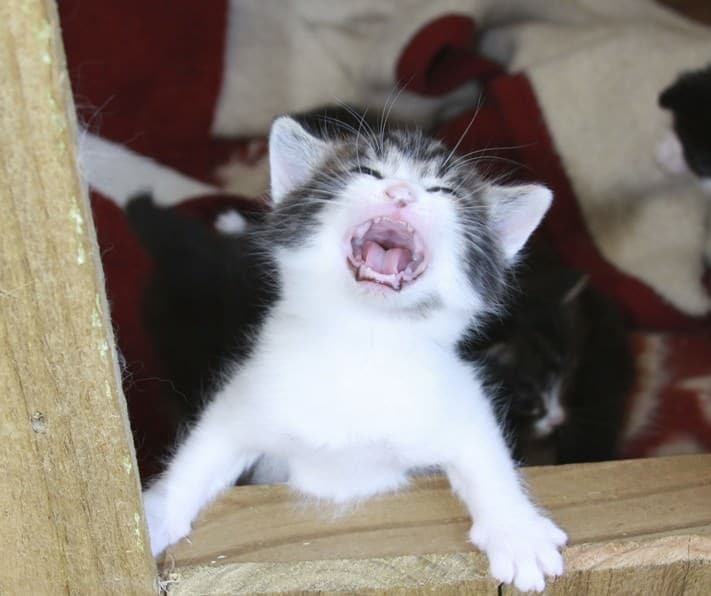Bringing home a new kitten is an exciting time. You’re checking items off your new kitten checklist, researching how much to feed your kitten, and generally learning how to raise this little fur baby. How you feed, play with, and support the needs of your kitten can vary depending on your new little buddy’s age and growth stage. But how can you tell how old a kitten is?
Ahead, you’ll find a handy kitten age chart that breaks down the physical and behavioral tells. We also break down the kitten stages and developmental milestones.
In This Guide:
How Can I Tell How Old My Kitten Is?
Kitten development can vary widely based on factors like maternal care and nutrition. For example, an improperly nourished 8-week-old kitten might look and develop like a 6-week-old kitten.
Eyes are the primary indicator of age, but you can also look at a kitten’s teeth and coat.
Kitten Eyes
- All newborn kittens are born with blue eyes that are closed.
- Their eyes start to open at around 1–2 weeks old.
- If the eyes are entirely blue, the kitten is usually younger than 4 weeks old and possibly younger than 6 weeks old.
- Eye color changes begin around the pupil and spread outward. If your kitten has a brown, green, or hazel halo around their pupils, the kitten is likely 6–8 weeks old.
- Fully adult eye colors like solid brown, yellow, green, and sometimes blue (though most cats don’t have blue eyes as adults) indicate the kitten is older than 8 weeks.
Kitten Teeth
Kitten Coat
Knowing your kitten’s age is crucial for their care and development. So, if you end up with a kitten of unknown origins (which is common among rescued kittens), you should bring them to the vet so that they can determine what kind and level of care they need.
For example, “if you bring a kitten into the clinic and their eyes are still blue, we know that kitten should be with their mother,” says Casey Seleman, a veterinary technician at Woodstock Animal Hospital, in Woodstock, New York. “The kitten probably needs to be on supplemental milk or be in the weaning process. As a clinic, we’ll support anyone learning how to care for a baby in a situation like that.”
Kitten Age Chart
This kitten growth chart offers general guidelines. As mentioned, a malnourished kitten might appear younger than their age. You can often identify an undernourished kitten if they have a coat with white ticking. They’ll grow out of those markings with consistent nutrition.
Interestingly, kittens age at the same rate across all domestic breeds, unlike puppies, where different breeds age at different rates.
Kitten Newborn (0–1 week)
Eyes closed; smaller than your hand; claws can’t retract; underdeveloped ears; suckling instinct; unable to move or walk; bean-shaped body
2-Week-Old Kitten
Baby blue eyes open; front teeth (canines and incisors) starting to show; beginning to interact, play, knead, and vocalize; claws still can’t retract
3-Week-Old Kitten
More developed front teeth; holding their weight with their legs consistently; walking and moving about well; can begin to eat wet food supplementally; experts may be able to determine the gender
4-Week-Old Kitten
Ears are up and triangular; claws begin to retract; eyes may start to lose their blue color (halo around pupils); gender determinable; beginning to play and show personality; starting the weaning process; can begin to use a litter box
5-Week-Old Kitten
Able to run, jump, pounce, and stalk; weaned and can begin eating kibble; premolars just poking through; eyes more actively losing blue color; ears fully upright and triangular; no longer toddling, moving more gracefully
6-Week-Old Kitten
Premolars are through, can eat hard kibble exclusively; eyes transitioning to adult color; full set of baby teeth; fully weaned from mother cat; full, adult-like musculoskeletal structure; back molars begin to come through; core routine vaccinations can begin
7-Week-Old Kitten
Fully litter box trained; possibly adult eye color; adult coat color starting to show
8-Week-Old Kitten
Full personality developed; claws fully retractable; learning to scratch and maintain claws
12-Week-Old Kitten
6-Month-Old Kitten
Full adult coat; full adult teeth; fully reproductively mature if not spayed or neutered; should be spayed or neutered
Kitten Stages and Developmental Milestones
Birth to 8 Weeks
A newborn kitten’s eyes open and their ears unfold.
During these first weeks, kittens depend entirely on their mother cat’s milk, and any orphaned kittens need immediate expert care to ensure they’re properly nourished.
“Kittens younger than 4 weeks should never be away from the mother, except for in case of emergency or tragedy,” Seleman says.
Four-week-old kittens can begin the weaning process, transitioning slowly from mother’s milk or kitten formula bottle feeding to wet cat food. Do this cautiously to prevent gastrointestinal issues.
8 Weeks to 6 Months
By 8 weeks old, kittens are typically ready to leave their mother and move to their new home.
From 6 weeks to 6 months, kittens grow rapidly. Adult teeth start replacing their baby teeth, and their kitten coat begins transitioning to an adult coat. This period is also crucial for initial training and socialization.
Unlike dogs, cats aren’t as food-motivated and can be more challenging to train. Be patient and learn what motivates your kitten—they’re individuals to their core, and what excites one kitten might bore another. If your kitten walks away mid training session, take a break and try again later.
Female cats can sexually mature during this period, sometimes leading to behavioral challenges if you don’t spay them. “Female cats can start going into heat as early as 4 months, so that is often not fun for families, because females will scream as though they are in pain,” Seleman says.
6 Months to 2 Years
Between 6 months and 2 years old, kittens enter a particularly mischievous phase. During this stage, kittens are all instinct and high energy, which can result in destructive behavior like scratching furniture and climbing curtains.
Many cat parents feel frustrated at this time due to the cat’s less domesticated nature and their inclination to follow their instincts. So, be sure to offer them tons of outlets for their energy, like toys and tall, vertical spaces for climbing, like cat trees.
FAQs About Kitten Age
Q:What age is still considered a kitten?
A:Cats remain in their kitten phase until they reach their full mental development and bonding capabilities at 2 years old, Seleman says.
Q:Can 4-week-old kittens eat wet food?
A:Four-week-old kittens can begin to eat wet kitten food, with caveats. If a kitten has never had anything but their mom’s milk, immediately feeding them wet food can lead to severe diarrhea and dehydration. Therefore, the weaning process must be gradual and carefully monitored.
And “if you find a kitten outside, take it to an expert right away. Feeding a kitten the wrong food can be harmful, especially if it’s younger than you think,” Seleman says.
Q:Is 12 weeks too old to get a kitten?
A:Twelve weeks isn’t too old to get a kitten. Many breeders and shelters wait until a kitten is 12 weeks old before letting you take them home, so they have plenty of time to develop their social skills and grow a hearty little body.
However, the best age to bring a kitten home is 8 weeks. By this age, kittens should be weaned and eating solid food. They’ll be independent and adaptable to their new environment.
Q:When do cats open their eyes?
A:Cats open their eyes around 1–2 weeks old.
More about raising kittens:
Share:

